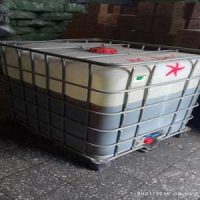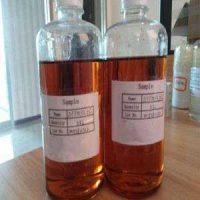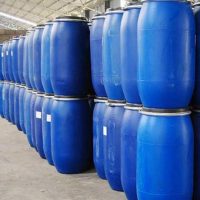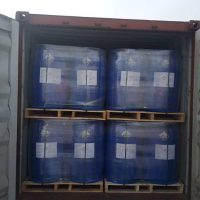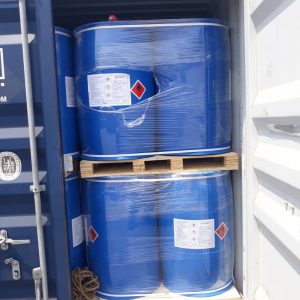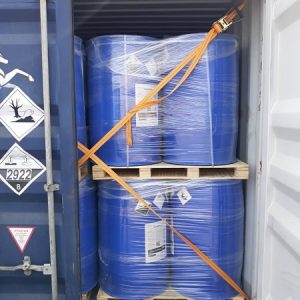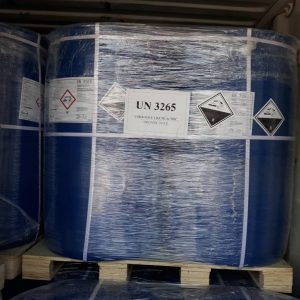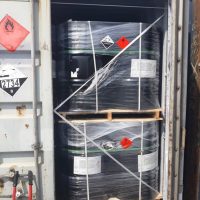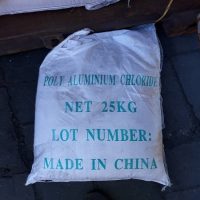DTPMP (Diethylenetriamine pentamethylene phosphonic acid)
- CAS Number: 15827-60-8
- Appearance: Liquid
- Purity:%
- Made in: China
- Phone Num : +86-2150591759
- E-mail: info@shanghaimetex.com
- Description
- analysis
Description
Diethylenetriamine pentamethylene phosphonic acid is a multi-toothed chelating agent and one of the phosphonates that act as an inhibitor of crystal formation. This phosphonate is also known as methylene phosphonic acid.
Phosphonates are an important class of organic matter with high chemical stability. These compounds are difficult to hydrolyze in solution.
These compounds are widely used in some industries such as water treatment, detergents, and agriculture.

Physical and Chemical Properties:
Methylene phosphonic acid is an organic nitrogen polyphosphonic acid that usually appears in the form of salt because its acidic form has very little solubility in water. In high-temperature environments (above 210 °C) DTPMP has better anti-corrosion and anti-fouling properties than other phosphates like ATMP, HEDP.
The most important physical and chemical properties of this compound can be summarized in the following table:
| Chemical formula | C9H28N3O15P5 |
| Molar mass (g/mol) | 573.20 |
| Appearance | Brown liquid |
| Density (g/mL at 20 °C) | 1.35-1.45 |
| PH (1%) | ≤2 |
| Melting point (° C) | >450 |
| Boiling point (° C) | >480 |
| Water Solubility (g/L at 25° C) | >520 |
The Structure of DTPMP:
Methylene phosphonic acid is structurally similar to amino polycarboxylate. DTPMP contains nitrogen and phosphorus atoms that can form a stable complex with alkali and intermediate metals.

Industrial Applications of DTPMP:
methylene phosphonic acid (DTPMP) is a compound with nitrogen atoms, which causes its chelating properties. As a result, by removing metals from aqueous systems, it exhibits anti-corrosion properties.
Sales of this product are very high due to the many applications of this compound in detergents, urban and industrial effluent improvement, power plant industries, chemical systems.
Detergents and cleaners:
Methylene phosphonic acids are essential compounds used in detergent formulations. Among other raw materials, these compounds are used to stabilize water hardness, disperse dirt particles, remove stains, stabilize disinfectants or bleach compounds.
Due to its high efficiency, even at low concentrations, this material can be diluted up to several times its volume and used in various products. Hence its use will be very cost-effective. The products used in this combination include dishwashing liquid, washing liquid, stain removers, dishwashing tablets, carpet shampoo, car wash products.
DTPMP in water treatment:
This material is used in water purification systems due to its antiscalant properties.
Due to its mineral content, water forms sediments when filtered in reverse osmosis systems, when floating and passing through various membranes and filters. Over time, this sediment disrupts the treatment system, causing damage and reducing system efficiency. For this reason, antiscalants play an important role in this industry.
Antiscalants are materials that, with their anti-fouling properties, are used to prevent the deposition of materials in reverse osmosis (RO) water treatment systems. They are also used as corrosion inhibitors in rotating cold water systems.

DTPMP deposition inhibitory properties in oil and gas industries:
Clogging of fluid flow paths by mineral sediments causes one of the most important damages to the oil and gas industry. Sediment particles deposited in the reservoir, well outlet, production pipes, or facilities block the paths. Phosphonates are an important class of mineral antifouling used to control oilfield deposits. By injecting phosphonates into the oilfield reservoir, calcium phosphonate deposits are formed and subsequently, phosphonates are released into the produced water to control the sediment.
Safety Information:
Maybe corrosive to metals.
Causes severe skin burns and eye damage.
Highly irritating to the respiratory tract
May cause long-lasting harmful effects to aquatic life.
First-aid measures:
Eye Contact: In case of contact with eyes, immediately flush the eyes with plenty of water.
Skin Contact: Remove this material from the skin with plenty of soap and water.
Inhalation: Remove to fresh air immediately. If not breathing, give artificial respiration.
Ingestion: Do not induce vomiting. Get medical aid immediately. Call a poison control center.
Packing and Storage:
DTPMP can be stored in plastic barrels in a dry and dark environment for 12 months.
analysis


